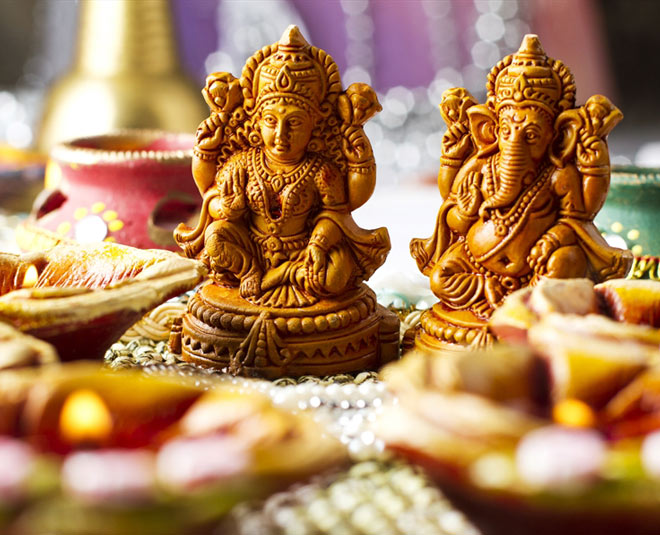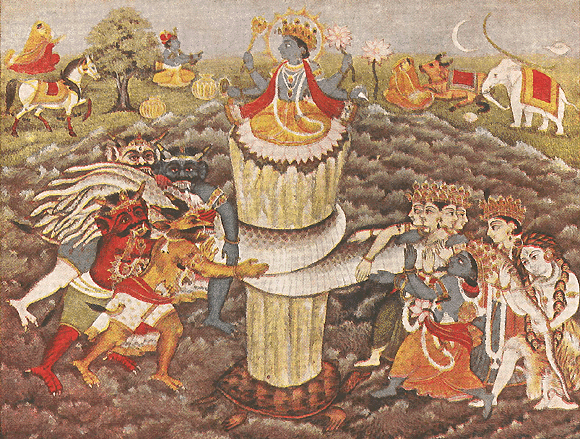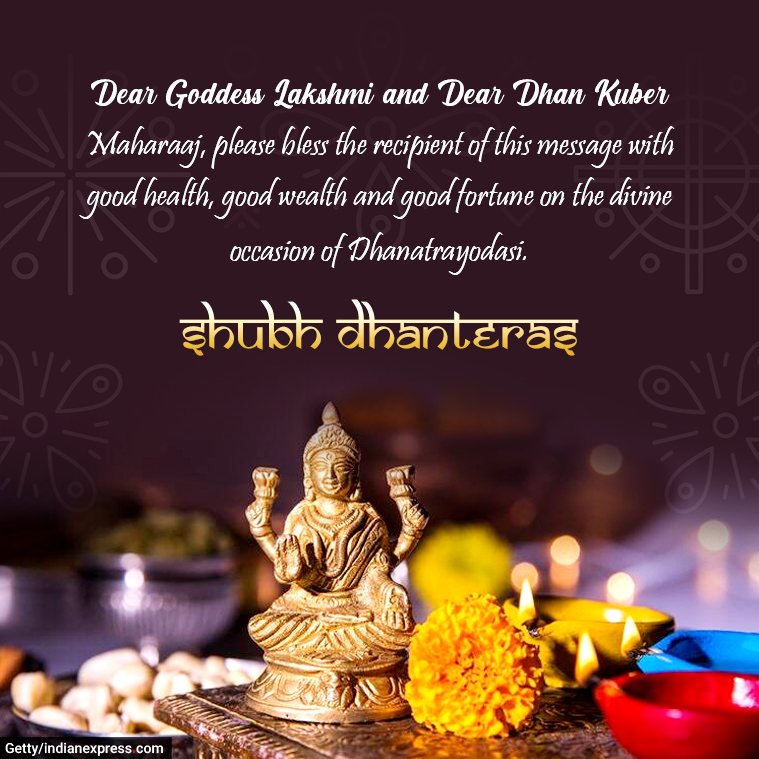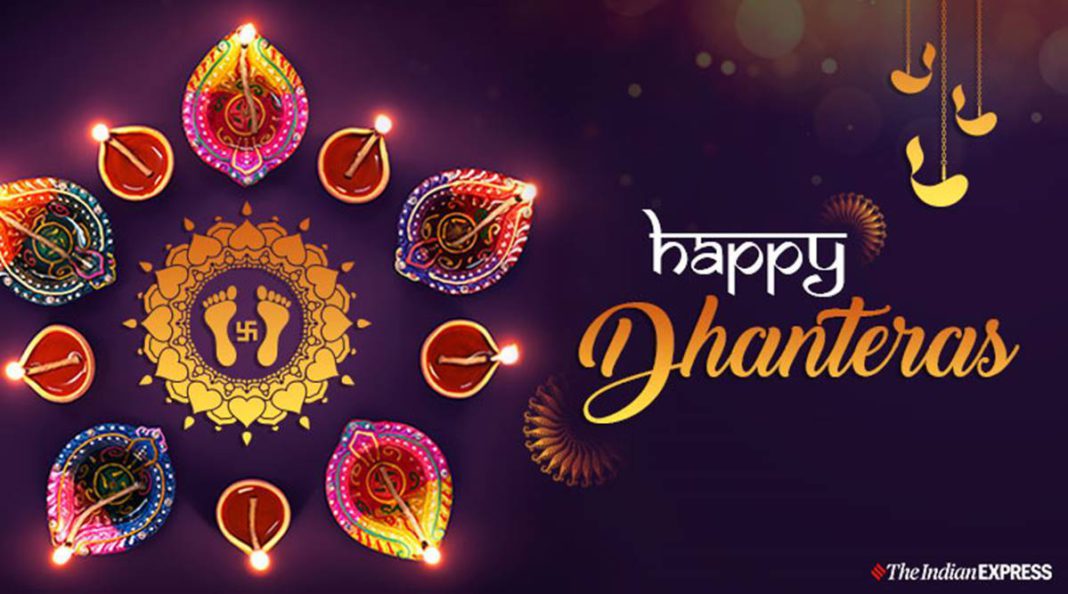Hinduism as a religion is marked by various colorful rituals and festivals, most of which are related to tales from the Hindu scriptures like the Vedas and the Puranas. One of the most colourful festivals celebrated by Hindus all over the world is Diwali. Considered the most important festival by many Hindus, Diwali is celebrated over a period of five days. The festival of Dhanteras is celebrated on one of these days. Wondering what is Dhanteras? Well, Dhanteras is a festival celebrated on the thirteenth day of the month of Ashwin according to the Hindu calendar.
The word ‘Dhan’ is a Hindi word that means wealth. As such, the festival of Dhanteras becomes especially important for the merchants, traders, and businessmen of India, who decorate their homes with lamps, diyas, and even rangoli for Dhanteras. To truly under the essence of the festival and learn why Dhanteras is celebrated, we shall have to take a look at the Hindu legends that form the history of Dhanteras.

What is Dhanteras?
Before we discuss the history of Dhanteras, let us first discuss what is Dhanteras and how is it celebrated. Also known as Dhantrayodashi, Dhanteras is celebrated two days before the festival of Diwali. According to the Puranas, this festival is celebrated to honor Dhanvantari, an incarnation of Lord Vishnu and the physician of heaven.
On this day the Dhanteras Puja is performed in which Lord Ganesh and Goddess Lakshmi, the symbols of well-being, knowledge, and wealth are worshipped. Along with Goddess Lakshmi, Lord Kuber, the treasurer and bestower of all wealth, is also worshipped in many households and business centres. One of the most important aspects of this festival is that along with households, many business centres across India also conduct Dhanteras Puja and decorate their showrooms and workspaces.

For the Dhanteras Puja, people clean their houses and decorate them with auspicious symbols like rangolis, clay diyas, and lamps. Lamps and diyas are lit up all over the house and left burning all night to drive evil spirits away. The rangoli for Dhanteras is an integral part of all these celebrations. Mostly an undertaking of the women of the house, a rangoli made up of vermillion and rice flour and bearing traditional motifs, is drawn at the entrance of each house.

Bhajans or religious songs and praises are sung and the victory of the good over the evil is celebrated. People distribute sweets and gifts, wishing each other a prosperous and happy Dhanteras. A popular practice on this day is buying gifts of gold, silver, or some other valuable metal for oneself or one’s family members. This practice is believed to ensure success and prosperity for the household. The meaning and significance of these customs can be well understood by taking a look at the history of Dhanteras.
History of Dhanteras

In the Hindu scriptures, different tales have explained the history of Dhanteras in different manners. However, in all of those stories, wealth and prosperity are linked to this festival. To understand
we must look into two tales explaining the history of Dhanteras that are almost universally accepted.
Samudra Manthan and Emergence of Lakshmi

The most important reason why we celebrate Dhanteras is the Legend of the Samudra Manthan, as mentioned in the Hindu scriptures. As Lord Indra’s ego and greed for wealth and glory got to his head, Muni Durvasa put a curse on him on account of which Goddess Lakshmi left him.
Upon Lakshmi leaving the Devlok Indra became weak and frail. Taking advantage of this situation, the demons attacked the territory of Indra and defeated him. A devastated Indra went to Brihaspati, his teacher who opined that the only possible solution to the ill fate of Indra would be churning the great sea.
What follows next is the reason why Dhanteras is celebrated. The gods were not powerful enough to churn the sea by themselves. Therefore they tricked and befriended the demons by making false promises to them. The demons joined the gods happily hoping to get ambrosia and wealth. But first came Kalakuta, a dangerous poison.
Lord Shiva drank the poison and became Nilkantha. To this date, Nilkantha remains in the background of Dhanteras puja. Soon after, Uchhaishravas, a horse, Kamdhenu, Kalpabriksha, and other celestial beings began to emerge from the churning of the sea. After some more churning, Apsaras, the beautiful dancers of Devlok were born.

According to the history of Dhanteras that has been handed down to us generation after generation goes, a goddess with sublime looks emerged from the sea. She stood on a Lotus emitting divine light. She was the most beautiful woman the gods and demons had ever seen. The smiling goddess with lotus garland in hand was none other than goddess Lakshmi.
After this Lakshmi was bathed in water from the Ganges and the sages started to recite hymns as the Apsaras started to dance. Much like the celebration of Dhanteras puja, Lakshmi was blessed by Brahma, the creator, and Vishnu, the curator. The king of the sea called Lakshmi his own daughter and gifts her with divine jewellery. She took the garland of lotus off her neck and put it on Lord Vishnu, becoming his wife.

Lakshmi blessed Devraj Indra and he regained his lost glory. After some more churning Dhanvantari emerged from the deep sea carrying ambrosia that made the gods immortal. As the history of Dhanteras goes, after drinking the ambrosia the gods defeated the Demons and returned to Devlok with Goddess Lakshmi, who is worshipped during Dhanteras puja to this date.
Hima and His Righteous Wife
The other story about the history of Dhanteras is the story of King Hima and his wife. At the age of sixteen, it was found in the horoscope of King Hima that he would die from a snake bite on the fourth day of his marriage.
Why we celebrate Dhanteras is explained by the incident that follows next. Despite the curse, King Hima was married to a righteous and pious woman. She heard about the curse but did not fear death as she believed she was righteous enough to defend her husband.

On the fourth night of the marriage, Hima’s wife lit thousands and thousands of diyas around the castle, just like we do during the Dhanteras puja. She made a heap with all of her jewellery and other things made of gold. It resembled the rangoli for Dhanteras. At midnight Yama, the king of death came in form of a snake.
But as he entered the palace he got blinded by the lights of the diyas and decided to rest the night on the heap of golds. While he rested, Hima’s wife sang soulful hymns in his praise. The night passed and Hima was unharmed. Soon the whole kingdom learned what happened and started celebrating Dhanteras puja. Lakshmi is therefore worshipped for wealth and glory on this day as mandated by the history of Dhanteras.
Conclusion

The festival of Dhanteras is celebrated with immense grandeur and faith in almost all Hindu households of India. This festival is believed to bring prosperity and well-being to the family. The history of Dhanteras is therefore told and heard with great reverence among the community. The stories explaining why we celebrate Dhanteras are treasured and handed down generation and generation, preserving the colorful Hindu culture. Every year, Hindu households are lit up with numerous diyas and decorated with rangoli for Dhanteras to celebrate well-being and prosperity.
Josie Patra is a veteran writer with 21 years of experience. She comes with multiple degrees in literature, computer applications, multimedia design, and management. She delves into a plethora of niches and offers expert guidance on finances, stock market, budgeting, marketing strategies, and such other domains. Josie has also authored books on management, productivity, and digital marketing strategies.


